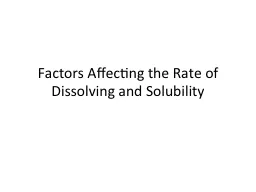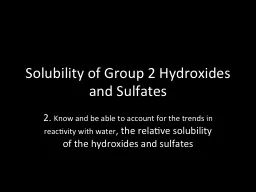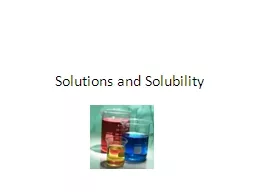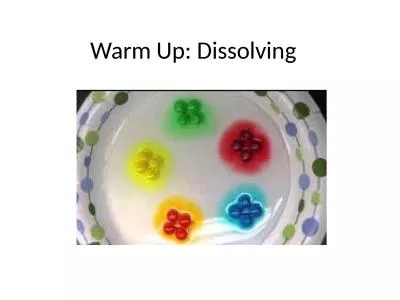PPT-Factors Affecting the Rate of Dissolving and Solubility
Author : tatyana-admore | Published Date : 2016-04-19
Recall solubility is the amount of solute that dissolves in a given volume of solvent at a certain temperature Solubility is determined by the intermolecular attractions
Presentation Embed Code
Download Presentation
Download Presentation The PPT/PDF document "Factors Affecting the Rate of Dissolving..." is the property of its rightful owner. Permission is granted to download and print the materials on this website for personal, non-commercial use only, and to display it on your personal computer provided you do not modify the materials and that you retain all copyright notices contained in the materials. By downloading content from our website, you accept the terms of this agreement.
Factors Affecting the Rate of Dissolving and Solubility: Transcript
Download Rules Of Document
"Factors Affecting the Rate of Dissolving and Solubility"The content belongs to its owner. You may download and print it for personal use, without modification, and keep all copyright notices. By downloading, you agree to these terms.
Related Documents














